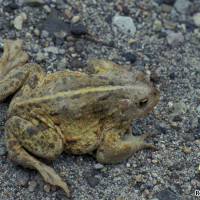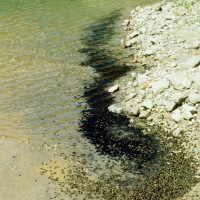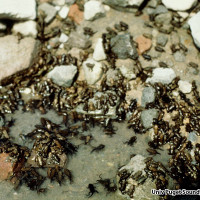How were amphibians (frogs, toads, etc.) and reptiles (snakes and lizards) affected?
Many amphibians were inactive at the time of the eruption burrowed in lake or stream bottoms or beneath logs and rocks. Survival was generally greater for aquatic than terrestrial life forms due to the tremendous sheltering capacity of water and moist sediments. Recolonization of newly formed habitats was particularly rapid for highly mobile amphibians (frogs and toads) that can travel considerable distances during cool, wet weather.
Reptile survival was apparently limited to adjacent undisturbed areas or areas receiving ashfall only. Fifteen years after the eruption, only garter snakes (Thamnophis spp.) and Northern alligator lizards (Elgaria coerulea) have been observed in areas receiving ashfall only and no reptiles have been observed in the blast zone. This is consistent with the presumed restricted occurrence and limited abundance of reptiles in the area prior to the 1980 eruptions.
The tremendous reproductive capacity of amphibians is evidenced by the large number of recently emerged western toads (Bufo borius) that are observed on the shoreline of lakes in the blown down forest northeast of the volcano.
- Adult western toad.
- Western toad tadpoles group together along the shoreline of Meta Lake.
- In spring, emerging toadlets cover lakeshores and trails.





